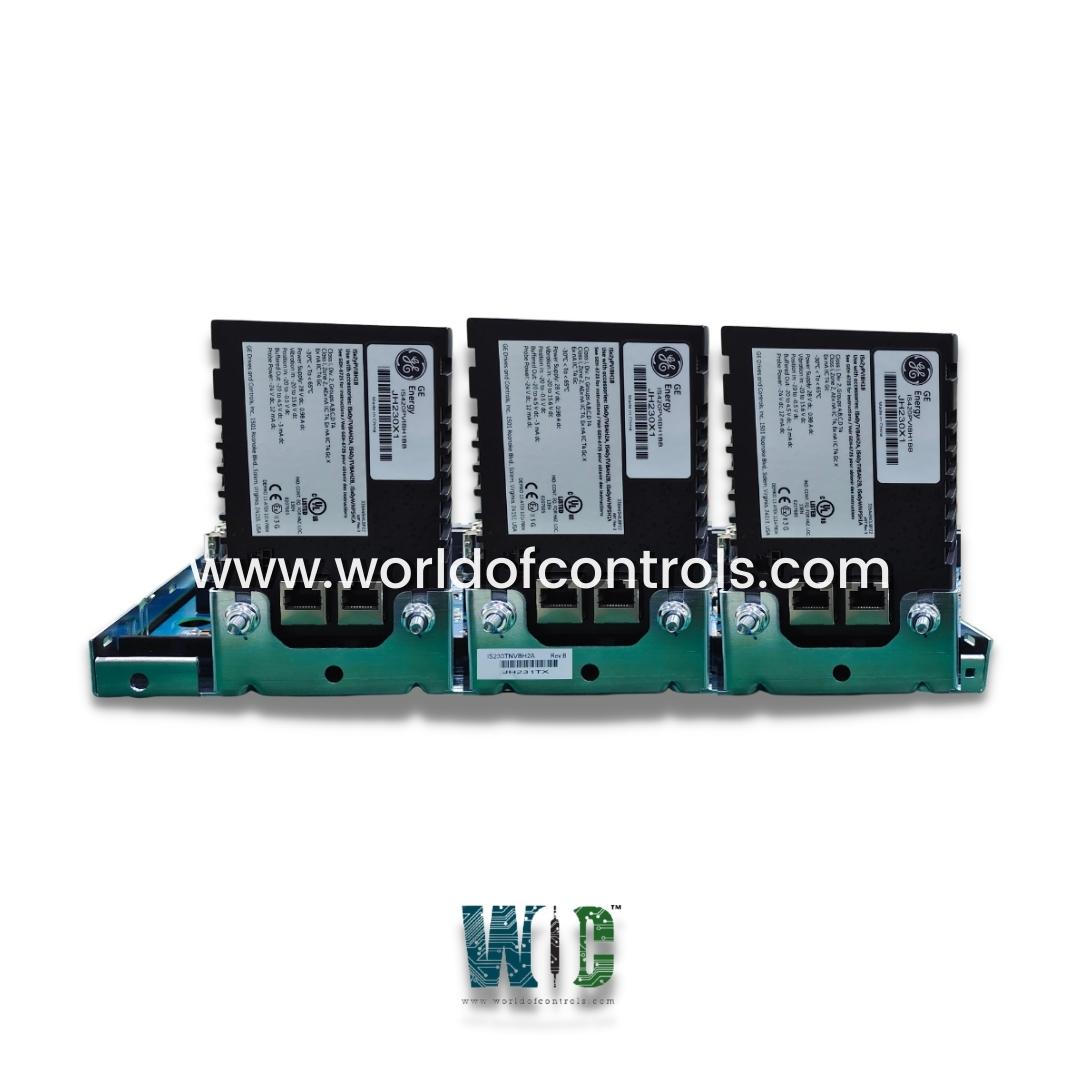SPECIFICATIONS
Part Number: IS230TNVBH2A
Manufacturer: General Electric
Series: Mark VIe
Function: Vibration Input Assembly Board
Manual: GEH-6721
Availability: In Stock
Product type: PCB
Country of Manufacture: United States (USA)
Functional Description
IS230TNVBH2A is a Vibration Input Assembly Board designed and developed by GE. It is a part of GE Mark VIe series. The Mark VIe control was created to serve a wide range of control and protection applications, including steam and gas turbines, as well as power generation balance of plant (BOP) equipment. The control provides more redundancy options, improved maintainability, and increased capability for locating I/O closer to the controlled equipment.
Fiber Optic Features
- Each fiber link is made up of two fibers, one incoming and one outgoing, to form a duplex channel. The outgoing fiber is powered by an LED, and the incoming fiber illuminates a phototransistor, which generates the incoming electrical signal. For optical links, multimode fiber with a graded index of refraction core and outer cladding is recommended. Buffering, which is analogous to insulation on metallic wires, protects the fiber. Mechanical stress is bad for fibers, so a strong sheath is used to carry the stress of pulling and vertical runs, sometimes with pre-tensioned Kevlar fibers. Power plant connectors should be attached to a reasonably robust cable with its own buffering.
- It is best to use a square connector (SC) type connector. This connector is commonly used in LANs and is widely available.
- Multimode fibers are rated for use at wavelengths of 850 nm and 1300 nm. At 850 nm, cable attenuation ranges between 3.0 and 3.3 dB/km. The core of the fiber is normally 62.5 microns in diameter and has an index of refraction gradation. The center has a higher index of refraction, which gradually decreases to a medium index around the circumference. Because a higher index slows light, a light ray entering the fiber at an angle curves back toward the center, out toward the other side, and back toward the center.
- This ray travels further but faster because it spends the majority of its time near the circumference, where the index is lower. The index is graded to keep the delays close together, preserving the shape of the light pulse as it travels through the fiber.
Operation
- The Vibration Inputs of the system are designed to accommodate various types of transducers, including Proximitor, Seismic, Velomiter, and Accelerometers (only on the first three inputs of PVIB). Each transducer type requires specific considerations for proper operation:
- Proximitor: The Vibration Inputs support Proximitor transducers. These transducers measure proximity or displacement and provide a signal superimposed upon a dc bias voltage. To accommodate Proximitor signals, a -11 V dc bias is added to the B/N buffered signal, with a tolerance of ±5%.
- Seismic: When configured for seismic transducers, specific adjustments are made. A negative bias is added to the input for open circuit detection. This allows the system to detect when the transducer is not properly connected. Additionally, the PRxxL signal is opened to enable a true differential reading, which helps meet common mode rejection requirements.
- Velomiter: The Vibration Inputs also support Velomiter transducers, which measure velocity. The signal from Velomiter transducers is superimposed upon a dc bias voltage within the defined input voltage range.
- Accelerometers: The first three inputs on the PVIB are dedicated to Accelerometers. Accelerometers measure acceleration and are treated similarly to Proximitor and Velomiter transducers. The vibration signal is superimposed upon a dc bias voltage.
- Regarding open circuit readings for the gap voltage (dc component), different thresholds are specified depending on the transducer type:
- Proximitor, Accelerometers, and Velomitor: The open circuit reading for the gap voltage (dc component) should be more positive than -1.0 V dc.
- Seismic: The open circuit reading for the gap voltage (dc component) should be more negative than -15 V dc.
WOC is happy to assist you with any of your automation requirements. Please contact us by phone or email for pricing and availability on any parts and repairs.
FREQUENTLY ASKED QUESTIONS
What is IS230TNVBH2A?
It is a Vibration Input Assembly Board designed and developed by GE
What is the recommended type of fiber for optical links?
For optical links, multimode fiber with a graded index of refraction core and outer cladding is recommended. Multimode fibers are rated for use at wavelengths of 850 nm and 1300 nm.
Why is buffering important for fiber links?
Buffering is analogous to insulation on metallic wires and protects the fiber. Mechanical stress is bad for fibers, so a strong sheath is used to carry the stress of pulling and vertical runs, sometimes with pre-tensioned Kevlar fibers.
What type of connector is recommended for fiber links?
It is best to use a square connector (SC) type connector. This connector is commonly used in LANs and is widely available.
